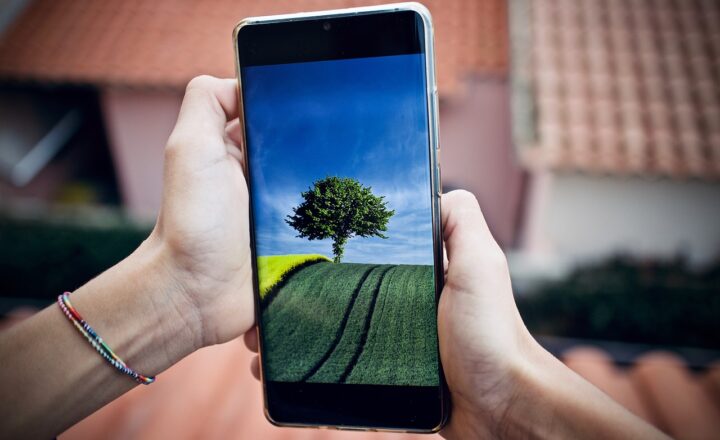The Strangest Forms of Communication Used Throughout Human History
November 17, 2024

Communication is a fundamental aspect of human existence. It bridges gaps, fosters relationships, and facilitates the sharing of knowledge and ideas. While we often think of communication as verbal or written language, throughout history, humans have utilized a variety of unusual methods to convey messages. From intricate smoke signals to the use of music, this article explores some of the strangest forms of communication that have emerged throughout human history.
1. Smoke Signals: Ancient Messaging in the Skies
In various cultures, especially among Native American tribes, smoke signals served as a vital means of communication over long distances. Simple techniques involved creating smoke by burning damp wood, allowing for the sending of messages up to several miles away.
Smoke patterns employed a sophisticated code; different types of smoke could represent different messages. For example, a steady column might indicate safety, while irregular bursts of smoke could signal danger or a call to action. This method of communication was not only effective but also necessity-driven, allowing groups to stay connected in vast landscapes.
2. Drums as Heralds: The Language of Sound
In many African and indigenous cultures, drums played a crucial role in communication. The rhythms and beats of a drum could relay complex messages over great distances. For example, different drum patterns could signify various events, such as the start of a meeting or the necessary mobilization in times of conflict.
The sound of drums transcended language barriers and was often faster than verbal communications, making it an efficient tool for gathering and galvanizing communities.
3. Semaphore and Signal Flags: Communicating Across Oceans
In naval communications, semaphore and signal flags became essential tools for sailors and ships to communicate in a language of colors and movements. Semaphore involves raising and positioning two flags to visually symbolize letters, allowing distant ships to exchange information effectively.
These signal systems were extensively used during the Age of Sail and continue to hold importance in modern naval operations, underscoring the creativity of humans in crafting visual communication methods.
4. Pictograms and Hieroglyphics: The Art of Visual Storytelling
Before the advent of written language, ancient civilizations, such as the Egyptians and Sumerians, utilized pictograms and hieroglyphics. These visual symbols illustrated ideas, stories, and events, serving as precursors to our contemporary alphabet systems. The ability to convey complex narratives solely through pictures highlights a unique blend of art and communication.
Each symbol could invoke different meanings based on context, creating rich tapestries of communication that reflected the cultures and belief systems of their time.
5. Message Trees: Nature’s Messengers
In some indigenous cultures, message trees were used as a form of communication. These trees were marked in specific ways, such as carving symbols into the bark or breaking branches to indicate information. Different markings could signify various messages, like warning travelers of dangers or indicating safe passages.
This unconventional communication method exemplified the interconnection between nature and human interaction, showcasing an understanding of the environment as a communication tool.
6. The Whispering Gallery: Acoustic Engineering
Across history, architects and engineers have crafted spaces to enhance specific forms of communication. The whispering gallery, found in domes like St. Paul’s Cathedral in London, showcases acoustic engineering where whispers can travel across vast distances without amplification.
This physical feature demonstrated a unique understanding of sound propagation and has served both as a functional communication tool and a fascinating architectural marvel.
7. The Homing Pigeon: Nature’s Messengers
Homing pigeons were historically used for long-distance communication, often employed in wartime to carry critical messages between military units. These birds have a remarkable homing ability, which allowed them to navigate their way back to their home lofts over great distances.
Trained pigeons could carry messages in small canisters, and their effectiveness in relaying information during crucial moments highlights the innovative thought processes humans have employed in developing communication methods.
8. Drum Languages of the African Tribes
In addition to a standard drum beat, specific tribes in Africa developed drum languages that mimic the tonal and rhythmic characteristics of spoken languages. These drum patterns allow for conversations between individuals across several miles.
The method showcases an intricate understanding of both sound and language, illustrating that communication can extend far beyond mere words.
9. Nonverbal Communication: The Power of Gestures
Before written languages were developed, and in societies without formal texts, nonverbal communication, including hand signals and body language, became effective ways to communicate. Gestures often translate into meaningful communication and can convey emotions and information without the use of words.
This method of communication remains prevalent today and reflects the significant role that body language plays in human interactions worldwide.
10. The Modern-Day Emoji: A Digital Evolution
Fast forward to the current era, where emojis have taken communication to entirely new levels. These straightforward graphical representations serve to convey emotions, actions, and messages in text form, enriching modern dialogues with visual elements.
While perhaps less strange than historical methods, emojis demonstrate humanity’s ongoing creativity in communication, blending verbal language with visual expression to enhance clarity and engagement. They represent an important cultural shift in how we express ourselves in the digital age.
Conclusion
The history of communication illustrates the extraordinary ingenuity of humans in overcoming barriers and expressing complex ideas. From smoke signals against an open sky to the digital emojis of the modern era, every form of communication underscores the universal desire to connect.
As we evolve, we continue to innovate and adapt our communication methods. Understanding these unique forms of communication throughout history not only helps us appreciate our past but can illuminate our future in how we convey information and connect with one another.







